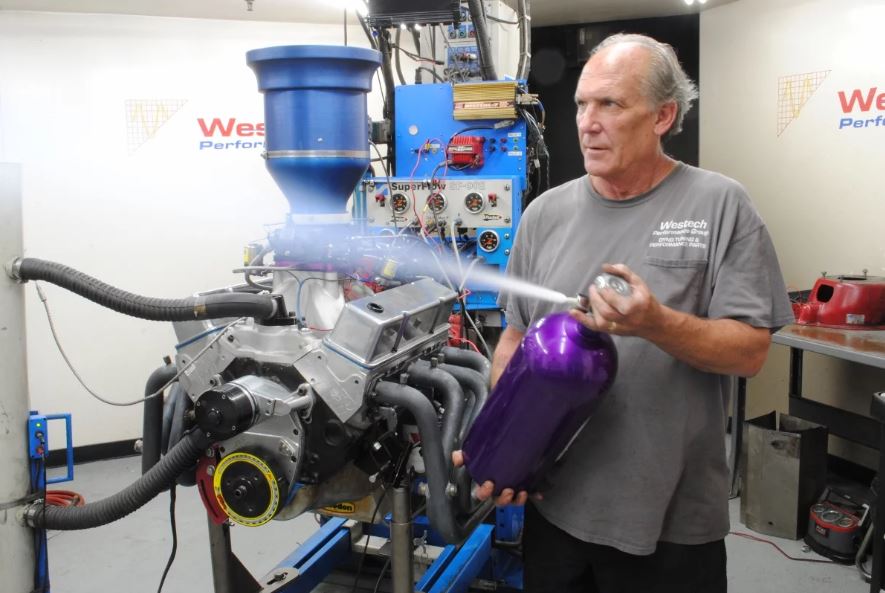
What does this code on my nitrous bottle signify? —
M.A.
Jeff Smith: The stamp on your bottle represents the date it was certified—in your case December 2017.
Each nitrous bottle is required to be re-certified every five years, so your bottle is good until December 2022. The smaller numbers between the date stamps are the identification letters for the facility at which the testing was performed.
Legally, a nitrous refilling station shouldn’t refill any out-of-date nitrous bottles, but as you may have guessed, not everybody checks the dates.
This isn’t something that should be taken lightly or is limited to nitrous bottles exclusively. Any pressurized container, like a simple CO2 bottle for a MIG welder, must also be re-certified. So don’t be surprised if your nitrous system includes an old bottle that may not be legal to refill.
We wrote a story on nitrous bottle re-certification a few years ago and actually watched as several of our old nitrous bottles were re-certified. We did this story with help from Mike Thermos who owns Nitrous Supply. He and his business partner Dale Vaznaian were the original owners of Nitrous Oxide Systems (NOS).
The certification process checks both the pressure and expansion characteristics of, in this case, an aluminum nitrous bottle. While most nitrous systems operate at or below 1,000 psi, the certification process pushes that to 3,000 psi. They also immerse the bottle in a larger tank that measures the amount of water displaced by the expanding nitrous bottle. If the bottle has no leaks at 3,000 psi, it can still fail if the bottle expands beyond specifications for the size of the bottle.
The bigger issue for nitrous bottle use is to avoid exposing it to any form of open flame. We’ve witnessed drag racers heating their nitrous bottles with a propane torch to quickly jack the pressure. This is an extremely dangerous practice as the open flame begins to anneal the aluminum. Annealing is a softening process that could cause a microscopic fracture. Then at some later date, this fracture could fail and the bottle explodes.
As an example of this, a few years ago in Los Angeles, CA, there was a TV news report of a violent explosion at an “auto repair shop” which killed the shop owner. Reports indicated that he was heating a large nitrous bottle with an oxy-acetylene torch with the nitrous bottle between his legs. The nitrous bottle exploded and killed him instantly. Shrapnel from the bottle injured two others who were in the shop at the time. Bottles under pressure are nothing to play with. Unfortunately, hard lessons like this one come at an extreme price.
This is probably more information than you expected, but the more educated we are about our hobby and the components we play around with, the safer and more fun we can have with our hot rods.

Great information, we need more stuff like that. Maybe include welding gas and how the bottles should be stored etc.
I put a light timing light on a 1984 Ford F150 V8 5.8 number one spark plug and put the light on and I did not see tomorrow when I go to do so now I bought a starter I bought a battery and about it and itching twitch and a guy Stereo Hearts 2 Still Still are Swift what did I do now my my my pee would not turn over
I put a timing light on a 1984 Ford F-150 I thought I know what I was doing but I put it on put it on the number one spark plug now I do not have power what did I do do my motor lock on me or not how can I get power back
You say each NOS bottle is required to be certified every five years.
Who is the authority that requires the certification?
What is the reference?
I’d like to read more about the certification process.
Thank you